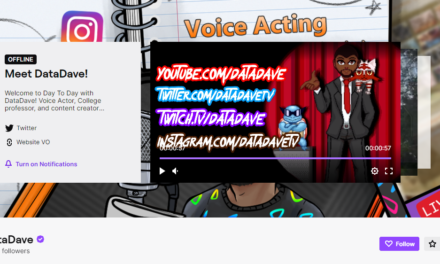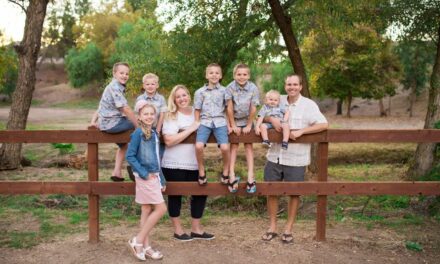
JANUARY 7, 2022
Features in this issue (view online):
- Full Tilt: Podcast Advice From the Front Lines
- Entrepreneur: Construction Content Business Builds Success
- Stan: First-Hand Experience Leads to Content Tilt
full tilt
Podcaster Reveals His Insider Tips to a Successful Podcast With Guests
Only 21% of podcasts on Apple are considered active as of December 2021.
It’s a big indicator that a lot of people create podcasts but fail to execute them successfully for the long term. I became a creator and host of a podcast for a co-founded Exeter University BusinessWeek (EUBW), a student-led finance initiative at university.
The podcast has been active for 28 episodes, featuring guests such as Warwick Hunt, COO of PwC; David Scowsill, board advisor for Airbnb; and Raoul Pal, CEO of Real Vision. My goal is to educate a million people about macroeconomics, equities, debt, infrastructure, venture capital, crypto, and all things finance. I’m, so far, 20% of the way there.
One afternoon, I decided to stop fearing and start doing. I set up accounts on Spotify and Anchor (the platform I use to upload my podcasts.) It didn’t take long.
As the podcast is designed as an interview-based creation, I reached out to potential guests. Using LinkedIn, I first drafted a connection request message to fire across to senior professionals I thought would be good on my podcast.
I refined my requests until I came up with a successful template, which explains who I am, the time their participation will take, and the topic of the interview.
And, finally, I coded a website for the podcast on Google Sites, which I did not find user-friendly. If you don’t know how to code, it is probably best to create one using Wix or similar templated website tools.
Here are four lessons I’ve learned about guest outreach:
1. Make your ask during traditional downtimes. I reached out to the executives on the weekend, especially Sundays. It led to a higher response rate because they weren’t stressed with their weekday work.
2. Do the easier asks first. As you start your podcast, don’t worry about getting the most high-profile or difficult-to-get guests right away.
3. Develop a track record. Many potential guests want to see the podcast has a track record and isn’t going to become inactive before their interview is published. They need to know you won’t waste their time and their presence will be on par with your previous guests.
Guests also need to know you won’t manipulate edits to make them sound bad.
4. Always follow up. When you don’t get a response from a potential interview subject, ask again. It once took four follow-up messages to the ex-CEO of Monzo Bank to get a reply. Although I felt awkward about the repeated outreach, he loved the persistence.
– Max Shannon
To get Max’s guest invitation template, production tips, and when to bring in help, read the longer story.
Get some more podcasting advice from This Old Marketing’s creators, who have published over 300 episodes.
content entrepreneur spotlight
YouTuber Matt Panella Bangs Out Construction Videos That Attract Millions
Entrepreneur: Matt Panella
Biz: Matt Bangs Wood
Tilt: New construction building, from start to finish
Primary Channel: YouTube (220K)
Other Channel: Instagram (39.9K)
Time to First Dollar: One month
Rev Streams: Advertising, brand partnerships, merch
Our Favorite Actionable Advice:
- Study the competition: He didn’t jump into creation. He researched what videos in his niche had the most views, how they were produced, etc., so his content would stand out.
- Be yourself: Matt found his audiences appreciated his authentic and relatable personality as opposed to those video creators who “act” in their role as hosts or narrators.
- Don’t work on commission: Single-payment compensation often works better for creators who sell a lot of product as well as those just starting out.
– Kimmy Gustafson
All the Story: To learn more about how Matt Panella has grown his six-figure content business, check out the longer story.
Know a content creator who’s going full tilt? DM us. Or email [email protected].
quick talk
Caught on … LinkedIn
How many newsletters do you subscribe to?
- Less than 5: 25%
- Between 5 and 10: 27%
- More than 10: 48%
(48 votes)
things to know
Money
-
Explore the Numbers: Consumer Technology Association’s new study, Exploring the Creator Economy, finds 7% of U.S. consumers 13 and older (nearly 20M) monetize their content in some way online. Full-time content creators reported earning an average of $768 per month. (Variety)
Tilt Take: The CTA released the news at the big CES 2022 trade show, another indicator of the growing value of content creators and content entrepreneurs to multiple industries. -
Patreon push: Creators on Patreon earned $3.5B between the platform’s launch almost nine years ago and Dec. 31, 2021. The revenue comes from subscription offerings. (The Information)
Tilt Take: That exponential growth indicates the big market for creators developing content that people will pay to consume.
Audiences
-
Can’t miss: #SEOFOMO newsletter creator grew her subscriptions 10x in two years. Among her tips: Create a newsletter that solves a problem you have and would love (and pay to receive). Make its name descriptive. (Aleyda Solis)
Tilt Take: We like this other tip too – create a home for your newsletter that explains what it is, facilitates findability and subscription signups. -
Categorically broad: The folks at InboxReads say you shouldn’t get too specific when labeling your content if you want it to appear in popular categories. For example, instead of “video game walkthroughs,” the category should be “gaming” or “video games.” (Inbox Reads)
Tilt Take: Identifying a popular category can be helpful, but it doesn’t mean your content tilt has to be broad too.
Tech and Tools
-
Finding out: Twitter is testing a new discovery feature, adding a new topics bar in the main tweet timeline with a link to real-time discussions in the app. (Social Media Today)
Tilt Take: By refining its topical curation process, Twitter will make it easier for creators to get involved in timely conversations and subject matter. -
Don’t panic: Though Google SEO updates can send creators into a tizzy, resist the urge. Here’s what you shouldn’t do: Don’t prioritize Core Web Vitals over quality content. Don’t assume your affiliate product review site is in trouble. And don’t assume Google will rewrite all your titles. (Search Engine Watch)
Tilt Take: Don’t spend a lot of time trying to game the Google algorithm. Just focus on creating valuable content, relevant titles, etc. That’s what your audience (and Google) wants most.
And Finally
-
Go short: Of the top 16 YouTube channels this week, 10 are active on YouTube Shorts. The other six are targeted to children. And all 16 have hung around the top of the list for over a year. (tubefilter)
Tilt Take: YouTube’s most frequently viewed list can be helpful to learn what content, formats, etc., attract audiences. -
Web3 tech: Web3 technologies, such as virtual and augmented reality, smart contracts, cryptocurrencies, “are going to completely change the way creatives create content, claim ownership, and get paid for their work.” (Entrepreneur)
Tilt Take: Creators who recognize the value of Web3 (technologies and more) will be on the front end of the learning curve, besting their competitors stuck in Web 2.0.
we’re a stan for Kimberly Hamilton
In 2019, Kimberly Hamilton founded Beworth Finance, a website and Instagram account (3.9K) dedicated to changing how millennials, specifically women, discuss and plan their finances. According to her website, her goal was simple – to offer in-depth, relatable, and approachable financial advice.
She explains, “I’m a proud New Yorker that moved to Washington, DC, making $15/hour in 2012. I was 24 and spent a lot of time being stressed about money. But through that process, I perfected a system that allowed me to pay off over $45,000 worth of student debt in three years, double my income in four, and buy my first home, before my 30th birthday, in five.”
Today, she makes a living by selling finance classes, speaking, in-person workshops, and private coaching sessions.
Why we’re a Stan: Kimberly found a content tilt based on her personal experience. But she went further, continuing her finance-related education formally and becoming a certified financial education instructor.
– Shameyka McCalman
the business of content
- 2021 Review – From Social Media to the Token (Content Inc.)
- 2022 Content Predictions Episode (This Old Marketing)
- Trouble Managing Your Time? Try Focusing on Your ‘Anchor Tenants’ (Fast Company)
- 5 Designer’s Shortcuts To Help Your New Startup Prioritize Brand Work (TNW News)
- 10 Entrepreneurs Share Tips for Running a Location Independent Business (Forbes)
the tilt team
Your team for this issue: Joe Pulizzi, Ann Gynn, Laura Kozak, Marc Maxhimer, and Dave Anthony, with an assist from Angelina Kaminski, Max Shannon, Kimmy Gustafson, Shameyka McCalman, and Don Borger.
Get more of the Full Tilt stories on TheTilt.com.
Know a content creator who’s going full tilt? DM us or email [email protected]
Was this email forwarded to you? Get your own sub here.
Copyright ©2022 Tilt Media LLC All rights reserved.
Unsubscribe | Update your profile | 17040 Amber Drive, Cleveland, OH 44111





